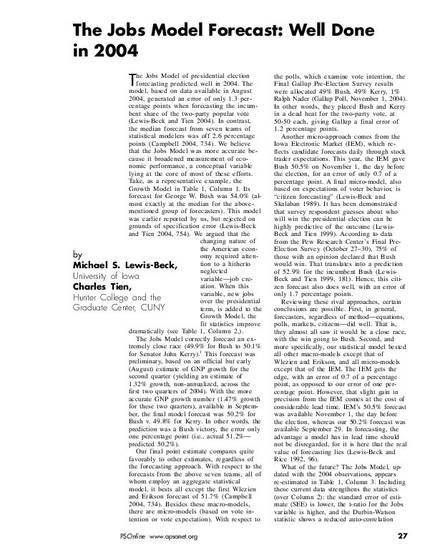
The Jobs Model of presidential election forecasting predicted well in 2004. The model, based on data available in August 2004, generated an error of only 1.3 percentage points when forecasting the incumbent share of the two-party popular vote (Lewis-Beck and Tien 2004). In contrast, the median forecast from seven teams of statistical modelers was off 2.6 percentage points (Campbell 2004, 734). We believe that the Jobs Model was more accurate because it broadened measurement of economic performance, a conceptual variable lying at the core of most of these efforts. Take, as a representative example, the Growth Model in Table 1, Column 1. Its forecast for George W. Bush was 54.0% (almost exactly at the median for the above-mentioned group of forecasters). This model was earlier reported by us, but rejected on grounds of specification error (Lewis-Beck and Tien 2004, 754). We argued that the changing nature of the American economy required attention to a hitherto neglected variable—job creation. When this variable, new jobs over the presidential term, is added to the Growth Model, the fit statistics improve dramatically (see Table 1, Column 2,).
Available at: http://works.bepress.com/michael_lewis_beck/155/
